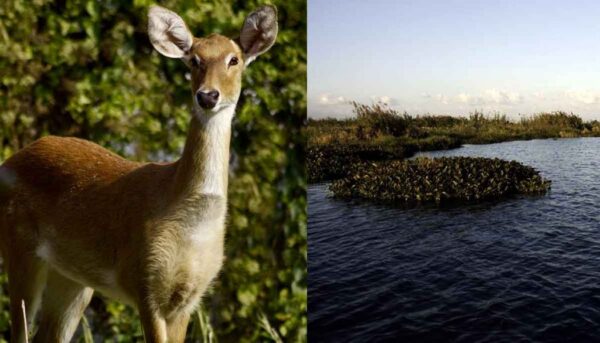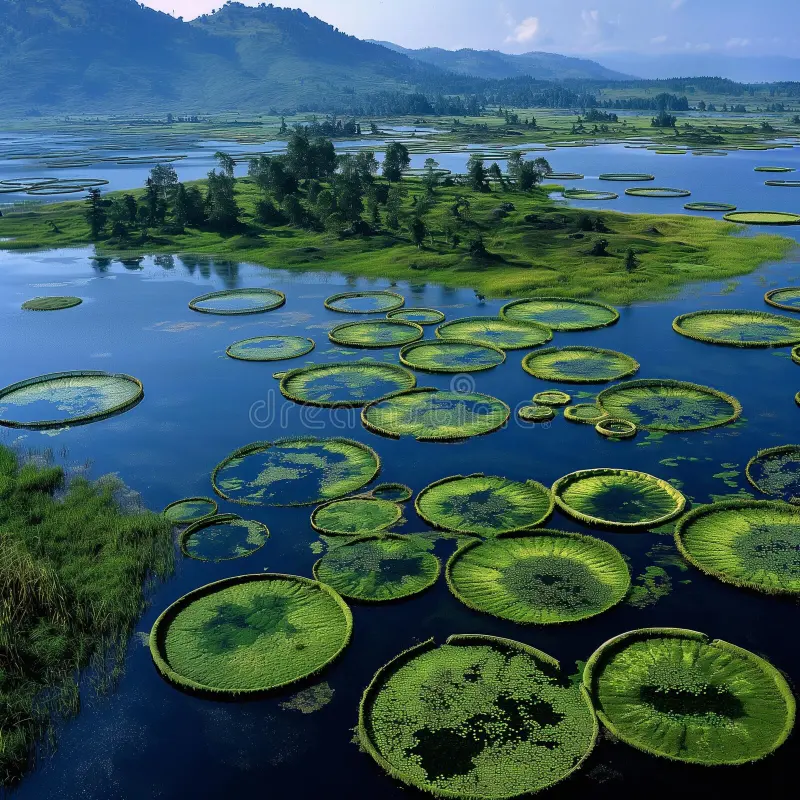Explore Loktak Lake in Manipur, home to magical floating islands called Phumdis. Learn about its rare wildlife, mysterious legends, and the unique lives of people who live on water.

Loktak Lake in Manipur is not just a natural wonder.
It is a living, breathing world that floats.
Here, nature writes stories on the water in the form of Phumdis — circular floating islands made from vegetation, soil, and organic matter.
They drift gently across the lake, creating a scene that feels almost unreal.
The lake is the largest freshwater lake in Northeast India.
It is also home to Keibul Lamjao National Park, the only floating national park in the world.
Here, you can see the endangered Sangai deer, often called the “dancing deer” for its graceful movements.
What Are Phumdis?
Phumdis are not fixed land.
They are mats of vegetation that have been growing, decomposing, and floating for centuries.
Some are so thick that they can support small huts, gardens, and even cattle.
During the dry months, these islands partly sink to touch the lakebed, absorbing nutrients.
When the monsoon rains arrive, they rise again, lush and green.
This natural rhythm has been continuing for generations.
Life on the Floating Islands
Life on Loktak Lake is unlike anywhere else.
Communities here build homes on stilts or directly on Phumdis.
Canoes are the only means of travel.
Children grow up learning to row before they can ride a bicycle.
Fishing is the main occupation.
People set up fish farms inside circular Phumdis, creating floating fishing enclosures called athaphums.
These aren’t just livelihoods — they are part of the culture.
For those who enjoy mysterious places, you might also read about Mayong — Assam’s Land of Black Magic and Forgotten Spells.
The Mysteries and Folklore of Loktak Lake
Loktak is not just a lake. It is part of Manipuri legend.
1. The Creation Myth
Local Meitei folklore says that Loktak was formed from the tears of a goddess who mourned the loss of her love.
The Phumdis are said to be her blessings — islands that would always provide shelter and food to the people.
2. The Disappearing Villages
Elders speak of villages that once existed along the shores but mysteriously sank into the lake during heavy rains, leaving no trace except ripples.
3. The Singing Waters
Fishermen claim that on quiet nights, the lake “sings” — gentle humming sounds rise from the water.
Some believe it is the voice of the goddess.
Others say it is the sound of water moving through the Phumdis.
4. The Restless Spirits
Like all water bodies, Loktak has its ghost tales.
Some locals avoid fishing at certain spots, saying they’ve seen ghostly lights or heard splashes when no one was there.
Rare Wildlife and the Dancing Deer
Loktak Lake’s Keibul Lamjao National Park is the only home of the Sangai deer.
This elegant animal walks on the Phumdis with a careful, dancing step to avoid sinking.
It was once thought extinct, but locals discovered a small population, leading to conservation efforts.
The lake is also home to over 200 species of aquatic plants, rare migratory birds, and endangered fish species.
For more strange natural wonders, explore The Strange Lights That Whisper in the Dark.
A Fragile Treasure
This magical place is under threat.
Pollution, overfishing, and human activity have damaged the lake’s ecosystem.
Some Phumdis are being broken apart for farming and fish farming, disrupting wildlife habitats.
Government bodies and local groups are now working to protect Loktak.
Eco-tourism is encouraged, with strict rules to avoid damaging the Phumdis.
Travel Guide to Loktak Lake
Best Time to Visit: October to March — cool weather and vibrant Phumdis.
How to Reach:
- By Air: Fly to Imphal, then drive 45 km to the lake.
- By Road: Regular buses and taxis from Imphal.
- By Rail: Nearest major railway station is Dimapur (Nagaland), then a road journey.
Things to Do:
- Take a boat ride through the Phumdis.
- Visit Keibul Lamjao National Park.
- Stay in a homestay on the lake.
- Watch the sunrise and sunset over the water.
Loktak Lake is not just a destination — it is an experience.
It’s where myths, nature, and human life blend into something truly unique.
And yet, it remains one of India’s most underrated wonders.
For more fascinating travel and world news, visit www.america112.com.



One Reply to “The Magic of Loktak— A World on Water”